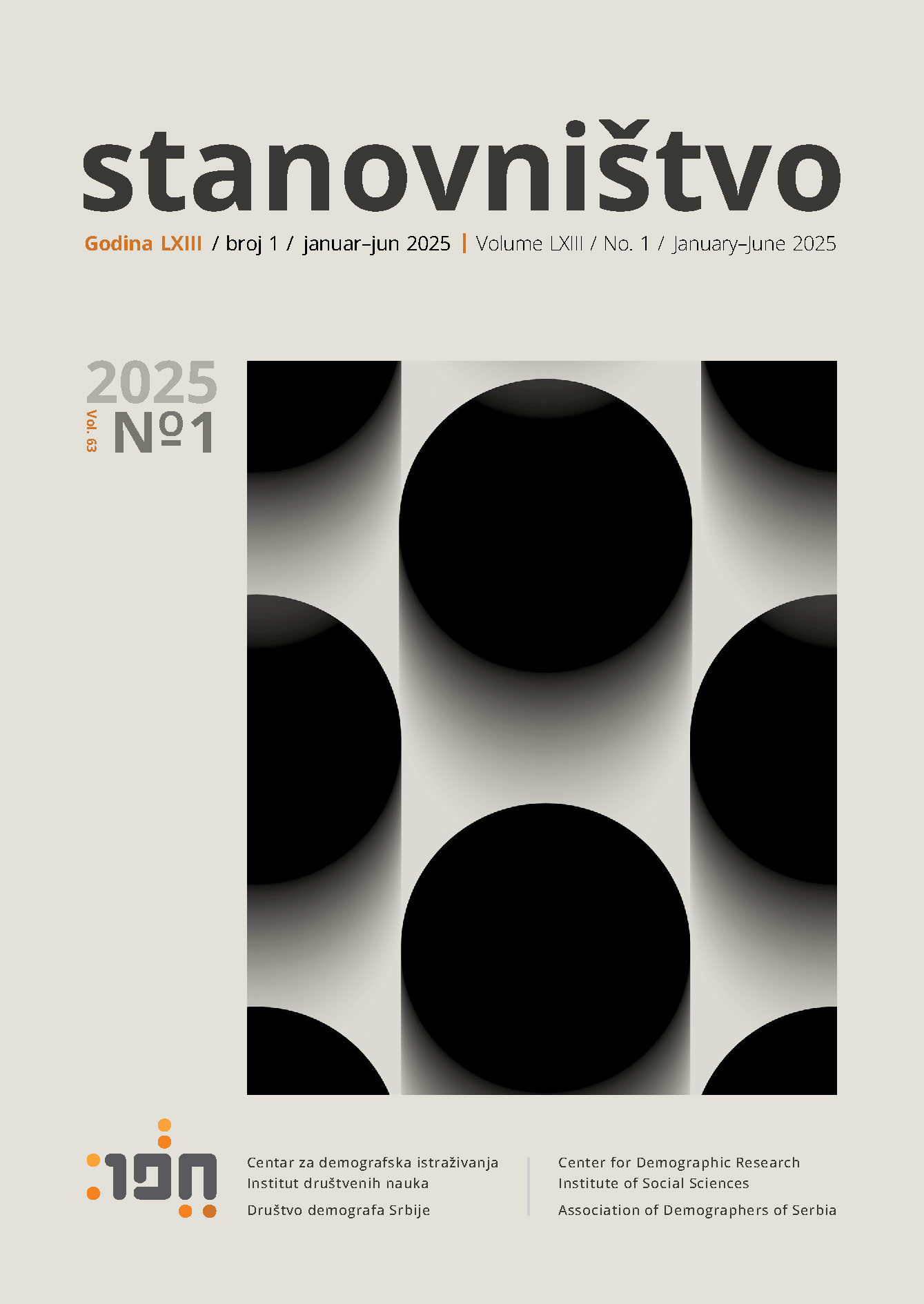The impact of digitalization and automation on working time, flexibility and stability
Main Article Content
Abstract
Downloads
Article Details
Published by the Institute of Social Sciences - Center for Demographic Research
References
Brough, P., Timms, C., Chan, X. W., Hawkes, A., & Rasmussen, L. (2020). Work–Life Balance: Definitions, Causes, and Consequences. Handbook of Socioeconomic Determinants of Occupational Health. Handbook Series in Occupational Health Sciences, 1–15. https://doi.org/10.1007/978-3-030-05031-3_20-1 DOI: https://doi.org/10.1007/978-3-030-05031-3_20-1
Brynjolfsson, E., Mitchell, T., & Rock, D. (2018). What can machines learn and what does it mean for occupations and the economy? AEA Papers Proceed, 108, 43–47. http://dx.doi.org/10.1257/PANDP.20181019 DOI: https://doi.org/10.1257/pandp.20181019
Butynska, R. (2019). The impact of digital technology on labour law: challenges and goals. Journal of the Kyiv University of Law, 3, 139–144. http://doi.org/10.18690/lexonomica.10.2.119-132.2018
Cortes, G. M., Jaimovich, N., & Siu, H. E. (2017). Disappearing routine jobs: Who, how, and why? Journal of Monetary Economics, 91, 69-87. https://doi.org/10.1016/j.jmoneco.2017.09.006 DOI: https://doi.org/10.1016/j.jmoneco.2017.09.006
Danylina, S. (2022). Ukrainian Labor Market in the Context of Digitalization and Martial Law. Baltija Publishing. https://doi.org/10.30525/978-9934-26-223-4-11 DOI: https://doi.org/10.30525/978-9934-26-223-4-11
Demianchuk, M. (2020). Influence of Digital Transformations on Intellectual Potential of the Enterprise. Issues of Systemic Approach in the Economy, 1(75), 98-106. https://doi.org/10.32782/2520-2200/2020-1-14 DOI: https://doi.org/10.32782/2520-2200/2020-1-14
Frey, C. B., & Osborne, M. A. (2013). The Future of Employment: How Susceptible Are Jobs to Computerisation? OMS Working Papers. https://www.oxfordmartin.ox.ac.uk/downloads/academic/The_Future_of_Employment.pdf
Institut DGB Index Gute Arbeit (2016). Arbeitshetze und Arbeitsintensivierung bei digitaler Arbeit. So beurteilen die Beschäftigten ihre Arbeitsbedingungen, Ergebnisse einer Sonderauswertung der Repräsentativumfrage DGB-Index Gute Arbeit (Work rush and work intensification in digital work. How the employees evaluate their working conditions. Results of a special evaluation of the representative survey DGB Index Good Work). https://index-gute-arbeit.dgb.de/veroeffentlichungen/sonderauswertungen/++co++70aa62ec-2b31-11e7-83c1-525400e5a74a
Kniazieva, T. V., Shevchenko, A. V., Yaroshenko, O. M., Inshyn, M. I., & Yakovlyev, O. A. (2021). Current trends in the formation and development of insurance marketing in Ukraine. Risk Management and Insurance Review, 24(3), 279–292. http://doi.org/10.1111/rmir.12185 DOI: https://doi.org/10.1111/rmir.12185
Lavrynenko, L. (2021). Digitalization and Its Impact on the Labor Market and Labor Relations. Education and Science of Today. Intersectoral Issues and Development of Sciences, 1, 23-24. https://doi.org/10.36074/logos-19.03.2021.v1.06 DOI: https://doi.org/10.36074/logos-19.03.2021.v1.06
Lévesque, C., Fairbrother, P., & Roby, N. (2020). Digitalization and Regulation of Work and Employment: Introduction. Relations Industrielles / Industrial Relations, 4, 647-659. https://doi.org/10.7202/1074558ar DOI: https://doi.org/10.7202/1074558ar
Marschall, J., Hildebrandt, S., Sydow, H., & Nolting, H. D. (2017). Gesundheitsreport 2017 (Health report 2017). Beiträge zur Gesundheitsökonomie und Versorgungsforschung, 16. https://www.dak.de/dak/download/gesundheitsreport-2017-2108948.pdf
Nazareno, L., & Schiff, D. (2021). The impact of automation and artificial intelligence on worker well-being. Technology in Society, 67(1). https://doi.org/10.1016/j.techsoc.2021.101679 DOI: https://doi.org/10.1016/j.techsoc.2021.101679
Osipova, I.V., & Khalil, V. V. (2021). Automation of production and safety issues for employees of automated and robotic lines. Paper presented at V International Scientific and Practical Conference of Higher Education Applicants and Young Scientists "Prospects for Territorial Development: Theory and Practice", Kharkiv, Ukraine (pp. 530-534). https://eprints.kname.edu.ua/61043/1/РМВ_2021-530-534.pdf
Petryshyn, O. V., & Hilyaka O. S. (2021). Human rights in the digital age: Challenges, threats and prospects. Bulletin of the National Academy of Law Sciences of Ukraine, 28(1), 23-24. https://doi.org/10.37635/jnalsu.28(1).2021.15-23 DOI: https://doi.org/10.37635/jnalsu.28(1).2021.15-23
Pyshchulina, O. (2020). Digital economy: trends, risks and social determinants. Kyiv: Razumkov Center, 274. https://doi.org/10.34069/AI/2023.70.10.11 DOI: https://doi.org/10.34069/AI/2023.70.10.11
Rudakova, S., Shchetinina, L., Danylevych, N., & Varshava, D. (2021). Digitalization of Employment Relations: World Experience and its Implementation in Ukraine. Halychyna Economic Bulletin, 6(73), 43-54. https://doi.org/10.33108/galicianvisnyk_tntu2021.06.043 DOI: https://doi.org/10.33108/galicianvisnyk_tntu2021.06.043
Simutina, Y., & Shumylo, M. (2023). Social and labour rights and challenges of digitalization. Kyiv: Nika-Tsenter, 348 p.
Stashkevych, O. (2021). The impact of technology and artificial intelligence on the labor market in Ukraine. Scientific Collection «INTERCONF», 81, 25-30. https://doi.org/10.51582/interconf.21-22.10.2021.004 DOI: https://doi.org/10.51582/interconf.21-22.10.2021.004
Stefancic, M., & Zirnstein, E. (2018). The impact of digital technologies and digitalization on labour law: the case of Slovenia. Lexonomica, 10(2), 119-132. https://doi.org/10.18690/lexonomica.10.2.119-132.2018 DOI: https://doi.org/10.18690/lexonomica.10.2.119-132.2018
Warning, A., & Weber, E. (2018). Digitalisation, hiring and personnel policy: evidence from a representative business survey. IAB-Discussion Paper, 10. https://doku.iab.de/discussionpapers/2018/dp1018.pdf
Warning, A., Weber, E., & Püffel, A. (2022). On the impact of digitalization and artificial intelligence on employers’ flexibility requirements in occupations—empirical evidence for Germany. Frontiers in Artificial Intelligence, 5. https://doi.org/10.3389/frai.2022.868789 DOI: https://doi.org/10.3389/frai.2022.868789
Yaroshenko, O., Melnychuk, N., Moskalenko, O., Prokopiev, R., & Yaryhina, Y. (2023). Protection of the rights of workers of industrial enterprises by international humanitarian law (on the example of the war in Ukraine). Comparative Law Review, 29, 73–96. https://doi.org/10.12775/CLR.2023.003 DOI: https://doi.org/10.12775/CLR.2023.003





